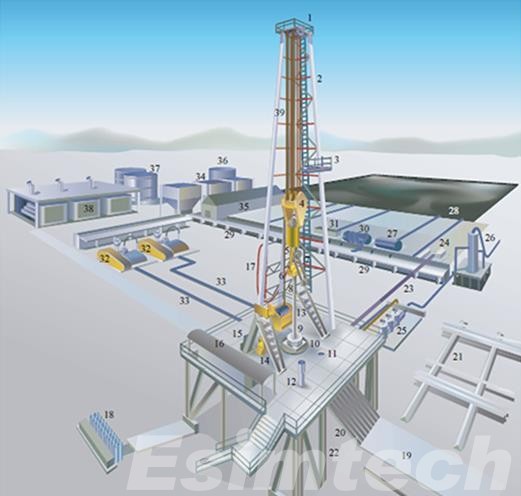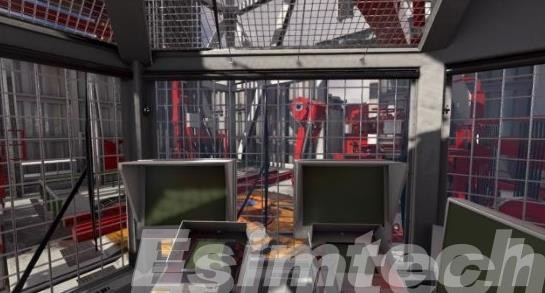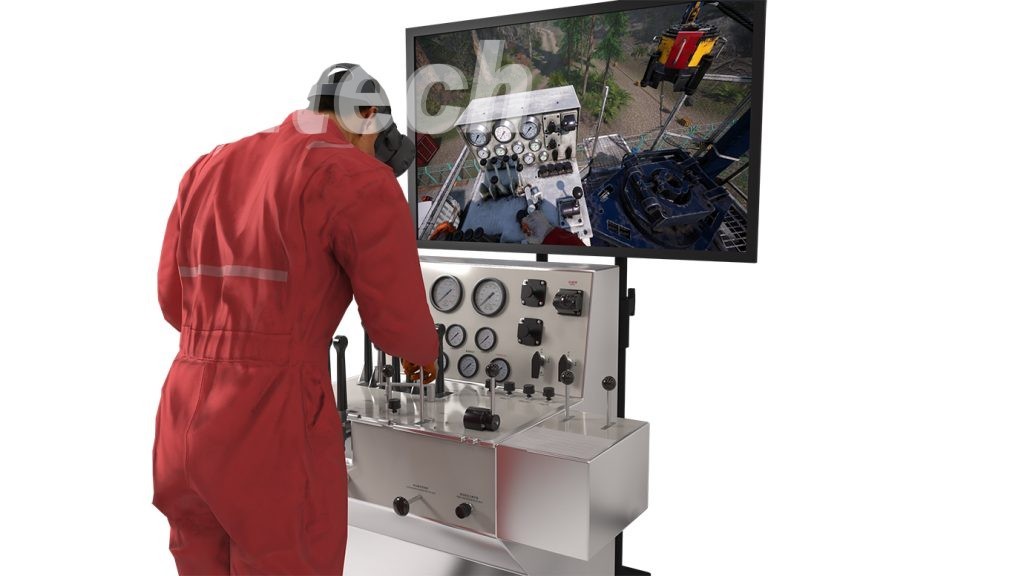Safety in the Oil and Gas Drilling System: Risks, Safty Measures and the Use of Technology
Drilling for oil and gas involves complex processes, heavy machinery, and high-pressure environments, all of which pose significant risks to workers and the environment. As a result, safety measures within the oil and gas drilling system are of paramount importance. This article delves into several critical aspects of safety in the oil and gas drilling industry.

The Risks of Oil and Gas Drilling System
Oil and gas drilling operations are inherently risky due to the nature of the work and the environments in which they take place. It is essential to comprehend these risks to appreciate the significance of safety measures fully. Some of the primary risks in oil and gas drilling include:
1. Well Blowouts
One of the most well-known and catastrophic risks in oil and gas drilling is a well blowout. A blowout occurs when there is an uncontrolled release of oil and gas from a well. This can happen due to a failure in well control mechanisms, such as blowout preventers, or the sudden release of high-pressure reservoir fluids. Blowouts can result in:
- Loss of Life: Blowouts can lead to explosions and fires that can cause fatalities among drilling personnel.
- Environmental Damage: The uncontrolled release of oil and gas can lead to extensive environmental damage, including oil spills and contamination of water bodies.
- Economic Losses: Cleaning up after a blowout and addressing its environmental and economic impacts can be extremely costly for both operators and affected communities.
2. Equipment Failures
The complex machinery and equipment used in drilling operations can experience malfunctions or failures. Equipment failures pose significant risks, including:
- Accidents and Injuries: Equipment failures can result in accidents and injuries to workers on the drilling rig.
- Downtime and Loss of Production: When critical equipment breaks down, drilling operations may need to be halted, leading to costly downtime and a loss of production.
- Environmental Impacts: Equipment failures can also contribute to environmental risks, such as spills or leaks of drilling fluids and chemicals.

3. Fires and Explosions
The presence of flammable substances like oil and gas creates the potential for fires and explosions during drilling operations. These incidents can be caused by various factors, including equipment malfunctions, human error, or electrical faults. The consequences can be severe:
Loss of Life and Injuries: Fires and explosions can result in fatalities and injuries to workers.
Asset Damage: The intense heat and force of explosions can cause extensive damage to equipment and infrastructure.
Environmental Consequences: Fires can lead to the release of pollutants into the environment and damage to ecosystems.
4. Hazardous Substances
Oil and gas drilling involves the handling and use of hazardous substances, including toxic chemicals and gases. Risks associated with these substances include:
Chemical Exposure: Workers may be exposed to hazardous chemicals during drilling and well completion activities, leading to health risks.
Toxic Releases: Accidental releases of toxic substances can harm the environment and surrounding communities.
Health Effects: Long-term exposure to hazardous substances can have adverse health effects on workers, including respiratory issues and skin conditions.
5. Environmental Impact
Drilling operations can have significant environmental impacts beyond the risk of blowouts and chemical releases. These impacts include:
Habitat Disruption: Drilling can disrupt local ecosystems and wildlife habitats, particularly in sensitive areas.
Water Contamination: Contamination of groundwater and surface water is a concern, especially when drilling fluids or produced water are not managed properly.
Climate Change: The extraction and burning of fossil fuels contribute to greenhouse gas emissions, contributing to climate change.
6. Regulatory Compliance
Non-compliance with safety regulations and industry standards can result in fines, legal liabilities, and reputational damage for oil and gas companies. It is essential for operators to stay abreast of changing regulations and ensure that their operations meet safety and environmental standards.
7. Economic and Financial Risks
Drilling operations are expensive, and unexpected incidents or accidents can result in significant financial losses. This includes the costs associated with cleanup, legal expenses, insurance claims, and the potential loss of revenue due to production stoppages.

Safety Measures in Oil and Gas Drilling System
To address these risks, the oil and gas industry has implemented a range of safety measures and protocols. These measures are designed to protect the workforce, the environment, and the integrity of the drilling operation. Here are some of the key safety measures commonly employed:
1. Safety Training: Comprehensive safety training programs are essential for all personnel involved in drilling operations. Workers must be well-versed in safety procedures, emergency response protocols, and the proper use of safety equipment.
2. Personal Protective Equipment (PPE): Workers are required to wear appropriate PPE, including hard hats, gloves, safety goggles, and flame-resistant clothing. This equipment helps safeguard individuals from various hazards.
3. Well Control Procedures: Strict well control procedures are essential to prevent blowouts and uncontrolled releases of oil and gas. These procedures include constant monitoring of well pressures and the use of blowout preventer.
4. Regular Equipment Inspections: Routine inspections and maintenance of drilling equipment are crucial to identify and address potential issues before they escalate into accidents.
5. Emergency Response Plans: Every drilling site must have detailed emergency response plans in place. These plans outline the steps to be taken in case of fires, explosions, spills, or other emergencies.
6. Environmental Compliance: Stringent environmental regulations and compliance measures are enforced to minimize the impact of drilling activities on the environment. This includes containment and cleanup protocols for spills.
7. Safety Audits and Inspections: Regular safety audits and inspections are conducted to ensure that safety measures are being followed and that any deficiencies are promptly addressed.
8. Behavior-Based Safety: Encouraging a safety-first culture is crucial. Workers are encouraged to report unsafe behaviors and near misses, fostering a proactive approach to safety.

The Role of Technology in the Safety of Oil and Gas Drilling System
Advancements in technology have played a significant role in enhancing safety within the oil and gas drilling industry. Here are some ways in which technology has contributed to safety measures:
1. Real-Time Monitoring: Sensors and monitoring systems provide real-time data on drilling operations, allowing for the early detection of anomalies or potential issues.
2. Automation: Automated drilling systems can perform certain tasks more safely and accurately than humans, reducing the exposure of workers to high-risk situations.
3. Remote Operation: Some drilling operations can be controlled remotely, reducing the need for personnel to be on-site in hazardous environments.
4. Data Analytics: Advanced data analytics can identify safety trends and areas for improvement, enabling proactive safety measures.
5. Safety Simulations: Virtual reality and simulation technology allow workers to train in realistic, controlled environments, preparing them for real-life emergencies.

Simulation in Oil and Gas Drilling System
1. Customized Simulation Environments: Simulation technology can be customized to replicate specific drilling environments, whether they are onshore or offshore. This customization ensures that training and drills closely mirror the actual conditions that workers will face in their daily operations.
2. Integration with Real-Time Data: Integrating simulation platforms with real-time data feeds from drilling operations allows workers to practice responding to dynamic situations. This prepares them for unexpected events that may occur during actual drilling activities.
3. Continuous Training and Assessment: The drilling and well control simulation system supports ongoing training and assessment. Workers can participate in regular drills to maintain their skills and knowledge, ensuring that they are always prepared to respond effectively to emergencies.
Conclusion
Safety in oil and gas drilling is a multifaceted endeavor that encompasses training, equipment, procedures, technology, and a culture of safety. The risks inherent in drilling operations demand a rigorous approach to safety measures. With ongoing advancements in technology and a steadfast commitment to safety culture, the industry can strive to minimize accidents, protect the environment, and ensure the well-being of its workforce. Ultimately, safety must remain a top priority in the pursuit of energy resources to meet the world’s growing energy demands.

